The planetary sciences and the French-Swiss cooperation under the spotlight.
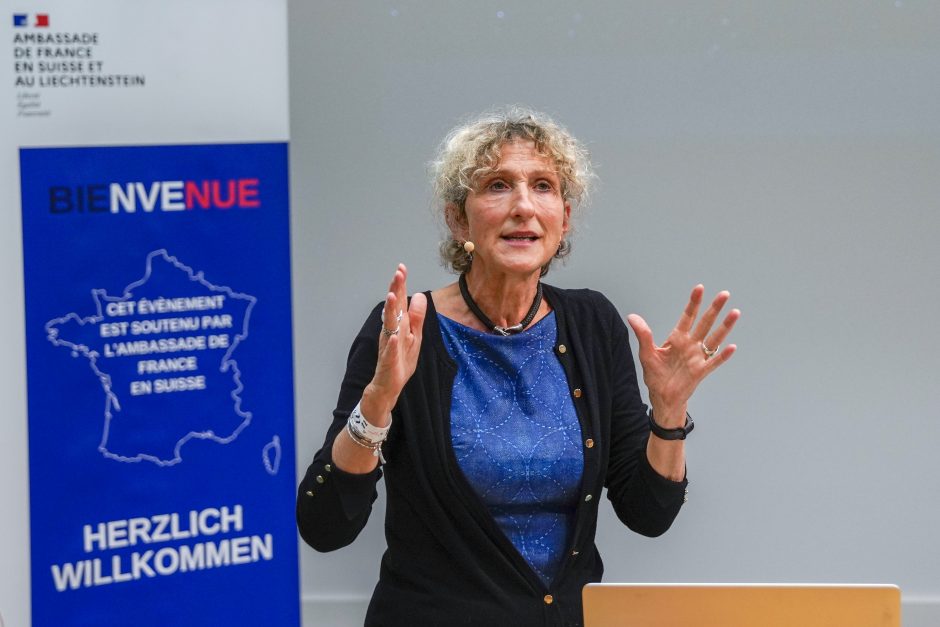
The French-Swiss scientific cooperation was under the spotlight at the University of Bern, during an event organised Wednesday 3rd of November 2021 in collaboration with the French Embassy in Switzerland and Lichtenstein. Professor Magali Deleuil from the Laboratoire d’Astrophysique de Marseille (LAM) was the special guest of this evening entitled “Looking for distant planets.”
“We are happy to be able again to wish you a warm welcome after those difficult times.” With these words, Christoph Pappa, General Secretary of the University of Bern, oppened the evening in front of a large audience. It was the first public event organised at the university since the beginning of the pandemic. Following him, Frédéric Journès, the French Ambassador in Switzerland and Liechtenstein, reminded that it is thanks to science if the fight against the pandemic is progressing, and if the event was possible. “Trust of the public into science has been damaged by the pandemic. This is why this kind of events is important to rebuild this trust and rebuild the link between science and the society.”
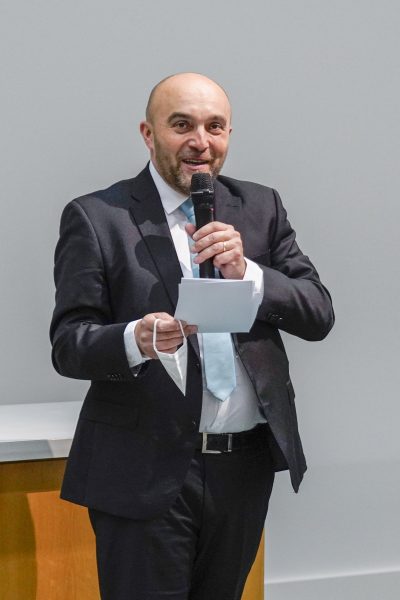
Frédéric Journès, the French Ambassador in Bern, has pointed out the necessity to have access to state-of-the-art instruments to do science. ©Sylviane Blum/University of Bern
After mentioning the current pandemic context, the Ambassador continued his speech about the topic of the evening: the exoplanets. Amongst others, he described his memories of the announcements of the discoveries of the first giant exoplanet and the first Earth-like planet. Having been involved in scientific research for many years, notably at the French Atomic Energy Commission (CEA), he has reminded us that state-of-the-art sciences need big instruments. He has also pointed out that such instruments need international collaborations to be feasible, before to note that “Magali Deleuil embodies the French-Swiss scientific collaborations on a daily basis.”
Professor Yann Alibert, a French scientist who has been working at the University of Berne for 20 years, is another perfect example of scientific exchange between France and Switzerland. In a short presentation following the speech of the Ambassador, he has reminded the assembly about the contributions of Switzerland and of the University of Bern in the field of space research, as soon as 1967 with atmospheric-measuring instruments onboard the Zenith rocket. In 1969, in the frame of the first moon landing, even before he sticked the flag of the United States of America in the ground, Buzz Aldrin deployed a solar wind collector built by the University of Bern. This instrument, later nicknamed the “Swiss Flag”, was onboard 5 Apollo missions that landed on the Moon. Since then, the University of Bern has contributed to over 30 instruments exploring every corner of the solar system, from the Sun with the satellite SOHO, to Jupiter and its moon with the soon-to-be-launched mission JUICE (expected arrival 2030), and passing by comets thanks to the Giotto and Rosetta missions. The last point of professor Alibert’s talk was the space telescope CHEOPS, launched December 2019. It is the first satellite developed under the joint leadership of Switzerland and the European Space Agency (ESA), with the participation of 10 other countries. Amongst those countries is France, including the LAM, where the team of Magali Deleuil converts raw images taken by the telescope into light curves. Those enable the scientists to detect and characterise planets external to our solar system, the so called exoplanets.
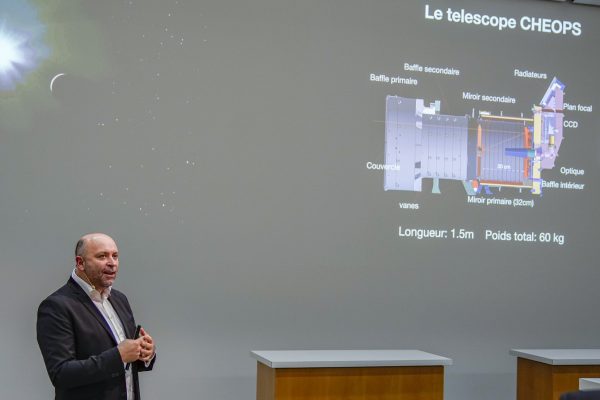
Professor Yann Alibert, astrophysicist at the university of Bern, has presented the CHEOPS satellite, built under the joint leadership from Switzerland and the European Space Agency.(ESA). © Sylviane Blum/University of Bern
Professor Deleuil recalled that the Department of Astronomy of the University of Geneva and LAM had already collaborated in 1995 to build the ELODIE instrument. This spectrograph decompose the light of a star into its “rainbow” colours, allowing the study of stars, including their chemistry. Moreover, this instrument is able to determine the velocity of the said star, thanks to the Doppler effect: if a planet orbits around the star, the speed of the star oscillates periodically. This allows us to deduce the presence of a planet. This is how, thanks to ELODIE, Michel Mayor and Didier Queloz discovered 51 Pegasi b, the very first known exoplanet to orbit around another solar-like star. This revolutionary discovery, rewarded with a Nobel prize, has thus been made by two Swiss astronomers, using a French-Swiss instrument, installed on a telescope located in France at the Observatory of Haute-Provence (OHP).
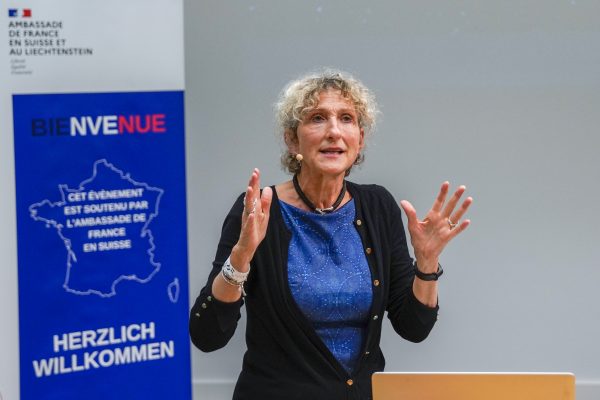
Magali Deleuil, professor at the Laboratoire d’Astrophysique de Marseille (LAM), and guest of honour of the evening, has amongst other things explained the future challenges of exoplanetary research. © Sylviane Blum/University of Bern
“The bestiary of exoplanets if very different from what we can see in our solar system,” professor Deleuil explained, referring to the specificity of 51 Pegasi b, which is a “hot jupiter”: a gas giant orbiting so close to its star that it is overheated and that its atmosphere is inflated. In fact, scientists at the time were even convinced that such a planet could not form. Then, they found many more of those. Another difference of the bestiary mentioned during the evening: CoRoT 7-b, the first super-earth, detected in 2011. Once more, an “impossible” planet according to the theories of the time. The game changed with the discovery of Kepler 10-c and many more: all being super-earths, or for some mini-neptunes. These “impossible” planets made it possible to better understand the formation of planetary systems, including our own.

Professor Deleuil during her keynote talk. © Sylviane Blum/University of Bern
Such breakthroughs have been possible thanks to the development of satellites like CoRoT (which also involved French-Swiss collaborations) or also Kepler. Professeur Deleuil declared to the French-speaking crowd that “Building satellites, is pushing instruments to their limits. On the ground, we can repair the telescopes and instruments, but with satellites – it’s impossible. There is no margin for error! The instruments must resist a very hostile environment during take-off and once in orbit.” To wrap up, Magali Deleuil has talked about the future of exoplanetary research. The satellite PLATO, in which the University of Bern is involved, will have the task to observe thousands of stars similar to our Sun, in order to detect and characterise exoplanets orbiting around them. This will enable us to search for planets always smaller, and potentially more welcoming for an hypothetical life. She concluded the event declaring that “Finding analogues to the Earth is the challenge of the next ten years. The adventure barely starts!”
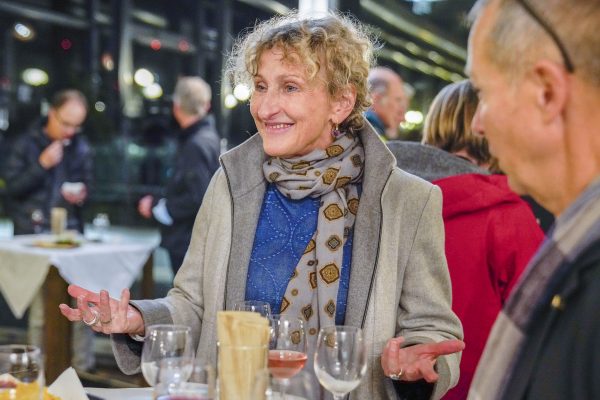
During the aperitif that concluded the event, Magali Deleuil enthusiastically answered the numerous questions of the participants. © Sylviane Blum/University of Bern

